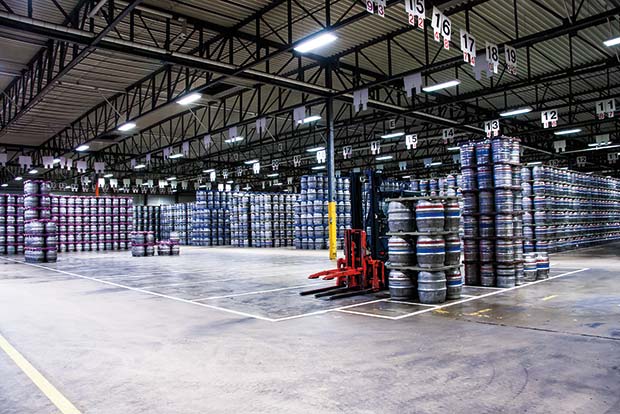Unsure whether LED technology is right for your warehouse space? Colin Lawson of Tamlite Lighting explains why LED lighting is ideal for warehouses and industrial spaces.

LEDs offer a double-win for business
Try not to look at the cost of an LED upgrade in direct comparison with an incandescent or fluorescent lighting solution. Think about the whole picture: the cost of the initial installation does not account for the Total Cost of Ownership (TCO), operations and maintenance of the system. LEDs consume far less energy, providing annual power savings of up to 70%, meaning that payback can be realised in a much shorter space of time.
Long life of LED fixtures also massively reduces the costs associated with maintenance – and this ensures that investment in LED is ‘double win’ for any business.
LEDs are ideal for warehouse spaces
Today, a range of fixtures with varying degrees of lumen output are available for industrial customers to select the most appropriate system for their use.
Many facilities managers have been used to evaluating the quality of light by ‘bulb wattage’, however it’s not accurate to make this calculation when dealing with LED fixtures. Instead, it’s better to think in terms of lighting efficacy. LEDs lose very little of their lumen output over the course of a 10-year lifespan and are better at targeting their light output at a specific task area – even in high-bay applications – compared with conventional light fixtures, making them ideal for warehouse and logistics spaces.
Invest in control options
A growing range of smart, add-on control tools for LED systems can optimise usage, reduce energy consumption and minimise operative costs.
The instant-on capability of LEDs means that timers and occupancy sensors can be used to turn the lights on only when the space is occupied. It’s also possible to network LEDs via remote management technologies, meaning that management of fixtures is possible at almost any location via a web-based interface. The HILUX HX LED range from Tamlite for example, has controls which are built into the luminaire, allowing full flexibility and ease of use.
All LEDs are not the same!
It’s often assumed that there is no difference between LED products and therefore it’s not worth investing more than you absolutely have to.
However, many poor-quality LEDs have a Colour Rendering Index (CRI) of less than 80 which will only make certain colours look natural and not distorted. In spaces where people will be working for long periods of time, you need to opt for LEDs with a CRI of 85 – which is the minimum legal requirement – and colour temperature levels of 3500-4000 Kelvin.




Comments are closed.